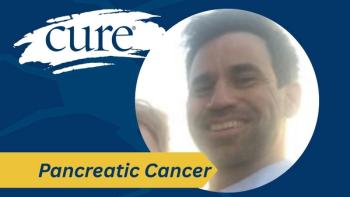
Zanzalintinib Triplet Combo Under Investigation in Kidney Cancer Subgroups
Treatment with zanzalintinib plus Opdivo and Opdualag is an option worth exploring in patients with previously untreated clear cell renal cell carcinoma
Treatment with the triplet regimen of zanzalintinib (XL092) plus Opdivo (nivolumab) and Opdualag (relatlimab-rmbw) is a treatment option worth exploring in patients with previously untreated clear cell renal cell carcinoma, a type of kidney cancer, explained Dr. Michael Serzan
The phase 1b study shared data from the dose-expansion cohort of the trial at the
It is also important to note that while the median follow-up for the doublet arm was 20.1 months, the median follow up for the triplet arm was just 15.9 months, meaning there is still a ways to go with exploring this treatment combination.
Serzan is a medical oncologist in the Lank Center for Genitourinary Oncology at Dana-Farber Cancer Institute, as well as an instructor of medicine at Harvard Medical School, located in Boston.
Transcript:
For patients who are newly diagnosed with clear cell renal cell carcinoma, how does this combination therapy of zanzalintinib and Opdivo with or without Opdualagcompare to existing frontline treatment options ?
This was a relatively small study — a phase 1 trial with only 80 patients, 40 in each arm — designed primarily to see how well this combination was tolerated. When we try to compare it with currently available options, it’s important to remember those are different studies with different patient populations and medications, so it’s not a perfect comparison. However, we tend to make those comparisons anyway.
What I would say about the results from STELLAR-002 is that the side effects in the doublet — zanzalintinib plus Opdivo — versus the triplet — zanzalintinib plus Opdivo and Opdualag — were fairly similar. About a third of patients experienced side effects, which were [consistent] with what we typically see with these types of treatments. The most common ones were hypertension, diarrhea, liver and thyroid abnormalities, and skin rash. If patients experienced these side effects, we managed them by reducing doses or temporarily holding the medications.
One notable part of the presentation was that very few patients in either arm ended up stopping treatment altogether. Investigators seemed able to identify what was causing the side effects, hold the medication, and then resume treatment.
As for tumor responses: in the doublet arm, we saw a response rate of just over 60% and a disease control rate of about 90%. That means about 60% of patients had their tumors shrink, and about 90% had their tumors shrink or stay stable.
When we look at the triplet arm, we saw somewhat lower rates — a response rate around 40%, though the disease control rate was still about 90%. Again, small numbers here with 40 patients in each arm, but it’s intriguing; you’d think that the triplet would show a higher response rate versus the doublet, but we did not see that yet in this study.
We also looked at progression-free survival, which was actually a bit longer in the doublet arm at about 18 months versus about 13 months for the triplet. It is intriguing to see.
The primary end point was safety and tolerability, and these combinations seemed fairly similar in that regard. That said, it was a little [disappointing] that the triplet didn’t seem to produce better or longer responses. Still, this is a combination worth exploring, especially as we continue searching for new drugs and regimens for patients with kidney cancer.
Transcript has been edited for clarity and conciseness.
For more news on cancer updates, research and education,




